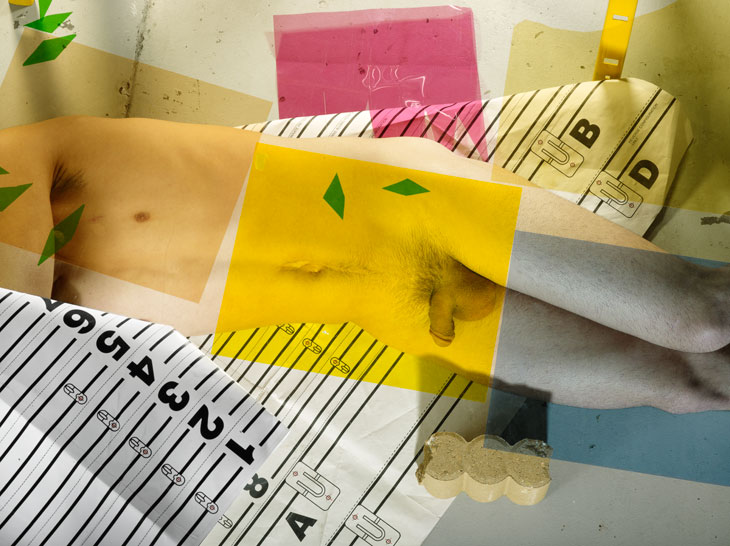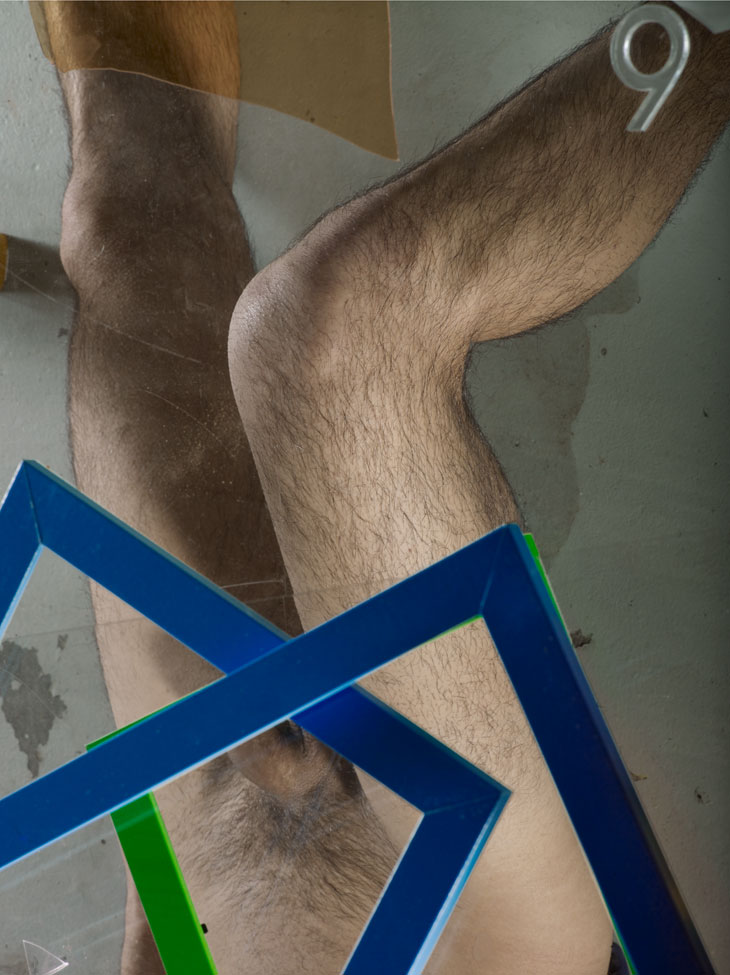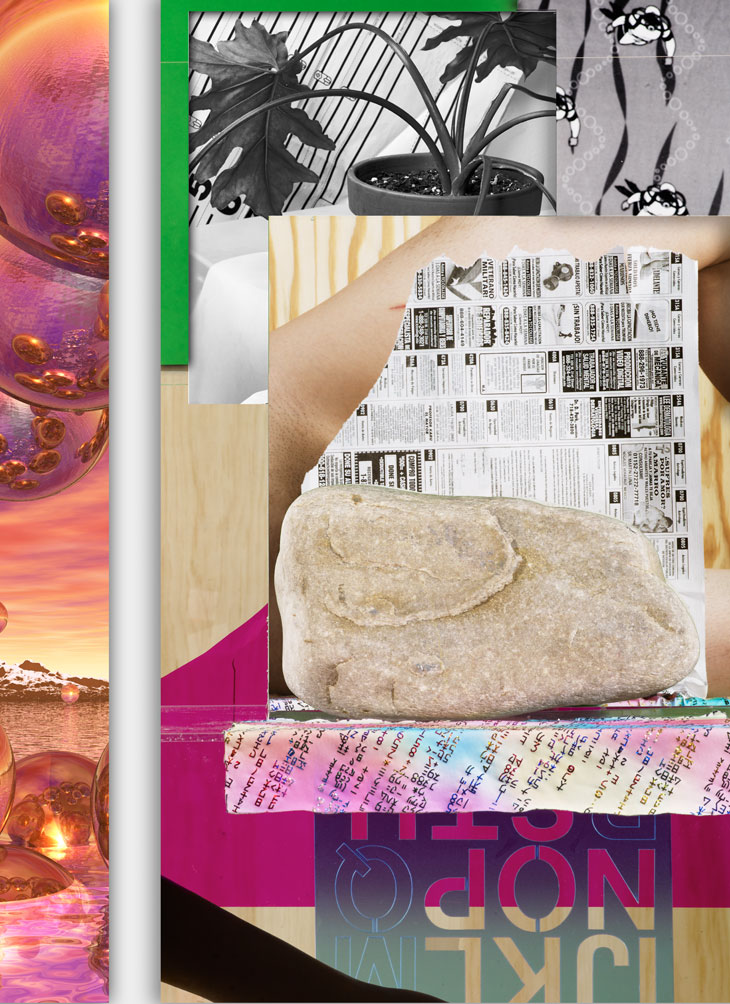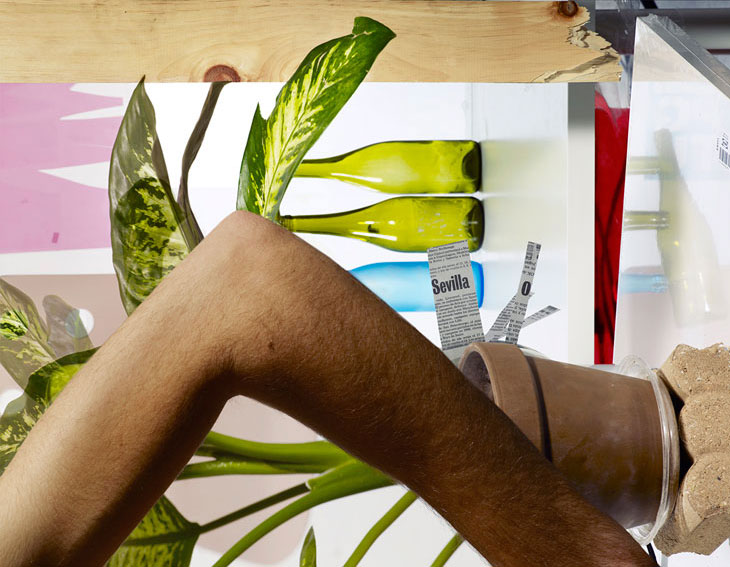




Michele Abeles
Michele Abeles claims that the male bodies she fragments have no greater importance than the bottles, pots, rocks, scraps of paper and flashes of bright colour (in the form of pieces of Plexiglas and coloured gels) that she composes into enigmatic still lifes. It’s true that one has sometimes to look hard for the body parts, but I think she may be selling herself short with the claim.
Their presence is substantial enough to interest anyone who enjoys the tradition of the nude. She is not the first to create visual puzzles where picture planes refuse to behave according to convention, and real objects have a flat, cut-out quality – Jan Grover did this brilliantly thirty or so years ago; nor is she a pioneer of truncated male bodies, which began in the 1920s and ’30s – George Platt Lynes comes to mind – and took full flight in the ’80s in the work of Robert Mapplethorpe and John Coplans.
But she has put the themes together in a strikingly original fashion, especially in the way in which she mocks the facile tools of computer manipulation.
Text by William A Ewing




